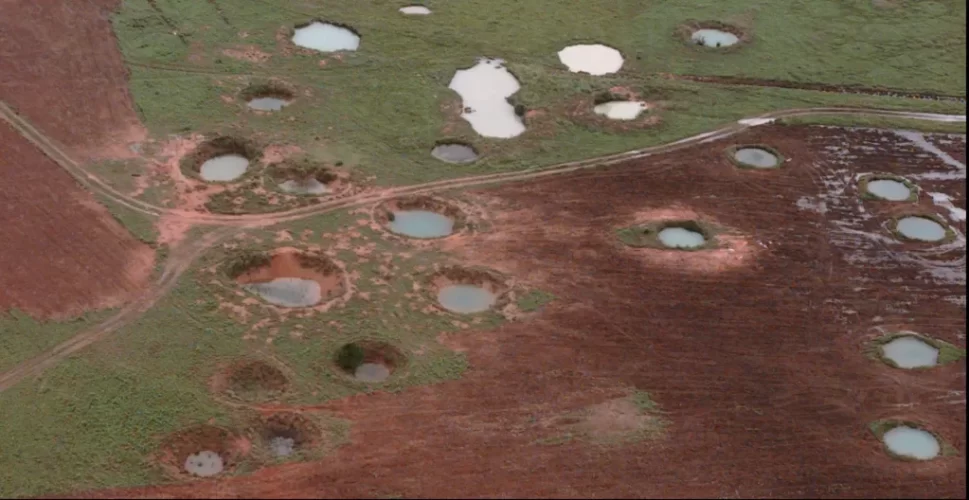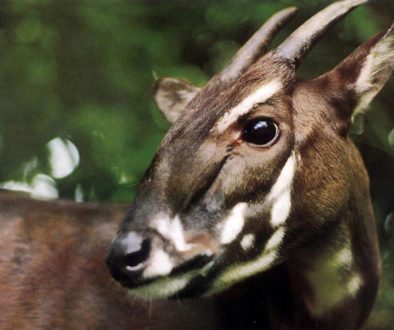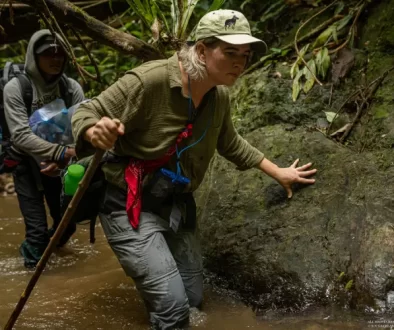Secret wars, secret creatures, and hope
Bill Robichaud, Co-Founder, Director, Saola Foundation 17th April 2023
Today, April 17, marks the 50th anniversary of an event of considerable historical significance,yet little noted: the last US bombing mission over Laos. This largely brought to an end the so – called “Secret War”, a nine-year conflict hidden for most of that time from the US Congress, the American people and the world.
A central feature of the conflict was a nearly non-stop US bombing campaign – a planeload ofbombs was dropped on Laos an average of every eight minutes, 24/7 nonstop from 1964 – 1973. The US military considered the conflict a “sideshow” to the main war next door in Vietnam, but it rendered Laos the most bombed country in history – 2.5 million tons of bombs were dropped on a country the size of the UK (or the US state of Oregon), with a population then of just three million. This was a greater tonnage of bombs than dropped all countries of Europe during World War II.
The main players in the Secret War were, on one side, the US-backed Royal Lao Army, the USAir Force and CIA-supported Hmong irregular fighters, and on the other, the communist Pathet Lao insurgency and the North Vietnamese Army. A major zone of conflict was the Annamite Mountains along the Laos-Vietnam border. There, North Vietnam worked to develop and maintain a network of supply routes just inside Laos – the Ho Chi Minh Trail – to skirt US ground forces in South Vietnam and funnel war materiel to their Viet Cong allies there.
Much of the bombing targeted the Ho Chi Minh Trail, but it also targeted many Lao villages, unlucky to be situated in the wrong areas. The objective was to render them incapable of supplying (voluntarily or not) food and other support to the North Vietnamese military. The conflict went unacknowledged by the major protagonists because most were violating a peace agreement signed in 1962, which stipulated that Laos was to remain neutral in the growing conflict in Indochina, with all foreign military presence banned from the country.
A half-century later, the people of Laos still deal with the legacy of unexploded ordnance (UXO). In some areas yet today, turning over the soil to make a new rice paddy with a metal hoe or plow risks injury or death. There are other impacts that can never be resolved by the clearance of UXO. While working in Laos on wildlife surveys in the early 1990s, I stayed for a few days in a small provincial capital, Phonsavanh, at the north end of the Annamite Mountains. The town was fairly new – the original had been so thoroughly bombed that it had to be relocated and rebuilt. Near my guesthouse each evening, a friendly Lao couple would set up a few plastic chairs and a grill along the dirt lane in front of their small clapboard house. They sold small skewers of grilled chicken and bottles of beer to earn some extra income. One evening as I sat chatting with them in my incipient Lao, they asked where I was from. When I replied America, the husband paused for barely an instant, then said, “Ah, America – a very good country. You are fortunate”
As the evening and our blossoming friendship progressed, I asked him how many children they had.
“Five”, he replied.
“Ah, where are they all?”, I asked.
He answered matter-of-factly, “Two are here, one studies in Vientiane, and two were killed in the American bombing.”
When it came time to walk back to my guesthouse for the night, they refused to accept payment for the skewers of chicken I’d eaten, because we were now friends and thus I was their guest.
I learned much that night, from their lack of rancor, and their willingness to not stare at the past, nor hold me responsible for it. Their simple gesture of generosity of spirit that night remains one of my greatest teachers.
After the US ended its military involvement in Laos in April 1973, the Pathet Lao eventually triumphed, seizing full power in December 1975, several months after the fall of Saigon in Vietnam. Like the new Socialist Republic of Vietnam on the other side of the Annamites, the newly named Lao People’s Democratic Republic had understandably had enough, thank you, and largely withdrew from western contact and influence.
By the early 1990s, the closed doors of Laos and Vietnam began to crack back open, and in1992 the Annamite Mountains attracted international attention for another, more hopeful reason. A joint team of Vietnamese and western biologists commenced a biodiversity survey of a small nature reserve, Vu Quang, in the Annamites of Vietnam. What they found surprised the world – the animal we now know as the Saola. It’s generally agreed that it was the most spectacular zoological find of the 20th century.
Saola was already uncommon at the time of its discovery in 1992. The intense US bombing in the Annamites, along with aerial spraying of Agent Orange and other defoliants, undoubtedly killed hundreds, perhaps thousands, of Saolas, and it’s possible the species never fully recovered from this. Nor have the years since Saola’s discovery been kind to wildlife in the Annamites. A new kind of “Secret War” has unfolded there – a war on wildlife by commercia lpoachers. Colleagues and I first observed this phenomenon unfolding in the mid-1990s. What lit the fuse for an explosion in the region’s transborder wildlife trade is not certain; it may have been an unanticipated result of the liberalization of private economic activity at about this time in Vietnam and neighboring China.
For the past thirty years the worst damage has been done by thousands (and by now likely millions) of wire leg-hold snares set by poachers. Ironically, Saola is not a target of this carnage– poachers mainly seek animals valued in traditional Asian medicine, or prized as bushmeat. Saola fits neither category, yet the species has been caught up in the general slaughter.
Laudable improvements in nature protection by the governments of Laos and Vietnam, with the support of many hard-working NGOs, simply have not been able to keep pace with the intense poaching. Consequently, the global conservation community (guided by the IUCN Saola Working Group) and the governments of Laos and Vietnam agree that a captive rescue and breeding program is now Saola’s best, and perhaps only, chance.
As those who follow the Saola story know, there remains the considerable challenge of the first essential step: finding individuals of a species so elusive that no biologist has seen one in the wild. This is a challenge that the Saola Foundation was built to meet. This year in the Annamite Mountains of Laos we will launch one of the most intensive and important searches of our time for a wild animal.
This will be not be easy, nor cheap – the intensive two-year search alone will cost about $3million. A fair question is, “why?” Why go through all this effort and expense for an animal that only villagers have seen, and that contributes nothing to the economic well-being of humankind? While the Annamites themselves are an important area of forest, with multiple ecosystem benefits for Laos, Vietnam and the region, Saola itself offers nothing of obvious economic value.
I’ve worked on Saola conservation for more than 25 years for one principal reason: beauty. For me, that’s enough. I suggest we would do well to let go a bit of the common ‘ecological services’ argument for nature conservation – as if wild species and wild places need to earn their right to exist through their economic benefit to humans. The Saola has been a thing of gentle, breathing beauty on our planet for about 8 million years, far longer than Homo sapiens. It has ‘earned’ its place here, and there is nothing more it need prove. Like the works of Van Gogh or Pollock, on which humans spend millions to possess and preserve, the world is a better, more wonderful place with Saola in it. For that, $3M seems a bargain.
As a baby boomer American, I grew up watching the Vietnam War on the nightly TV news – all those reports by Walter Cronkite about how many young Americans had died that day, and how many on the other side we had killed. Fifty years after we finally ended our misguided and unhappy “sideshow” in Laos, I take heart that where my country once destroyed, perhaps we can now help restore, through helping to save the Saola, and the Annamite forests where some of them still quietly live.
Can conservation of a bit of nature and beauty help reconcile such damage? One answer is that true healing is available only through nature, so we would do well to try. Doing so could help heal not just the Annamite Mountains, but also ourselves.




